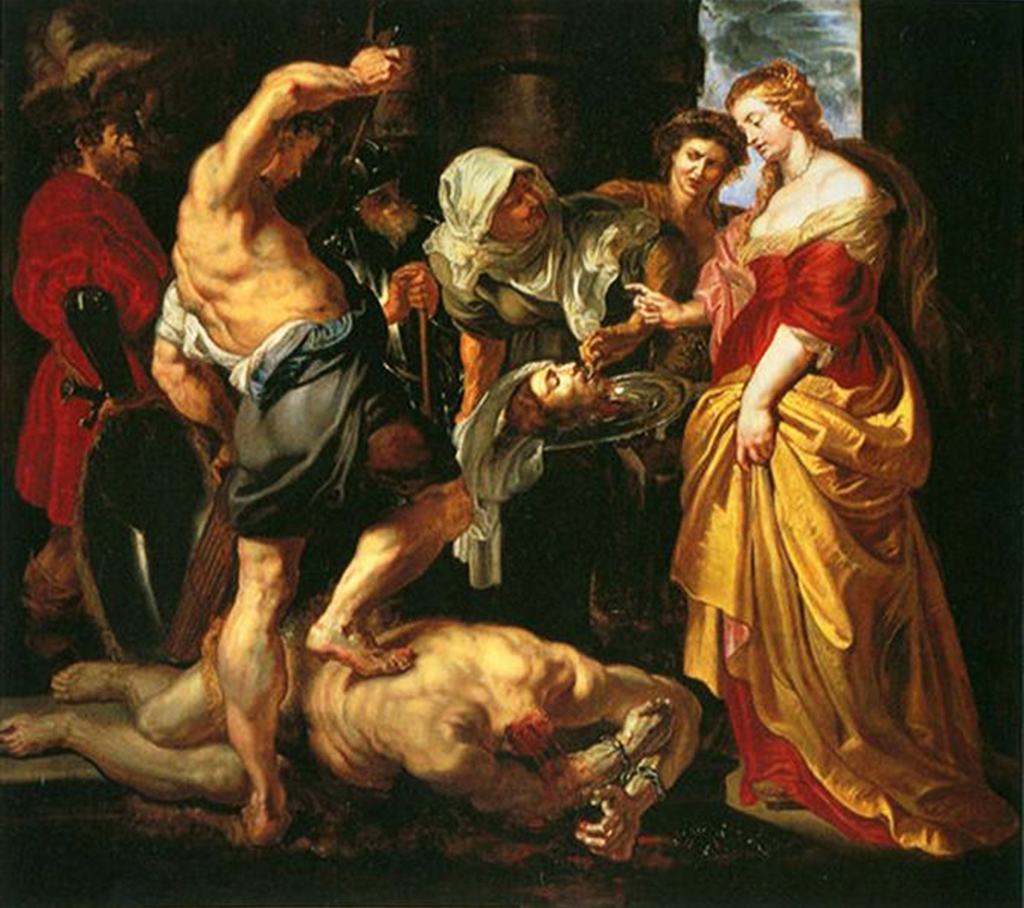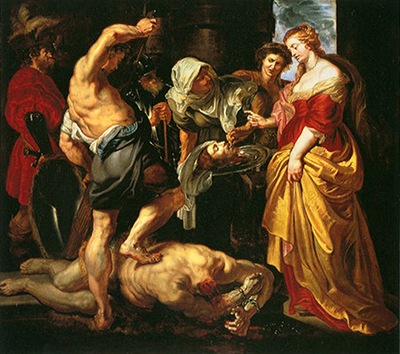This truly gruesome scene occurred frequently during the Renaissance and Baroque art movements, with many artists producing their own versions of the Beheading of St John the Baptist.
This painting is dated at 1609-1610 and fits well with the Feast of Herod, at which point the head itself is presented to the King. This painting displays the order of Salome being given and the head being placed on the tray, prior to the feast itself. Rubens features clues as to how the gruesome act was completed and also shows the rest of the victim lying on the floor.
Salome famously looks on as a servant sticks a fork onto the tongue of the saint, somewhat bizarre but highly memorable. His body lies motionless on the ground with his hands still tied. The artist gives him a fine physique, as he tended to do with most adult males in his portraits. A lady in the background looks on with shock and concern, perhaps reflecting the emotions of the viewer.
The standing male, positioned with his back towards us, appears to be putting his sword away having sliced the saint's head off. He seems relaxed in following these orders, never questioning the decision to give this saint the ultimate punishment. It is reported that his own opposition to the marriage of Salome and the King was what resulted in this conflict.





